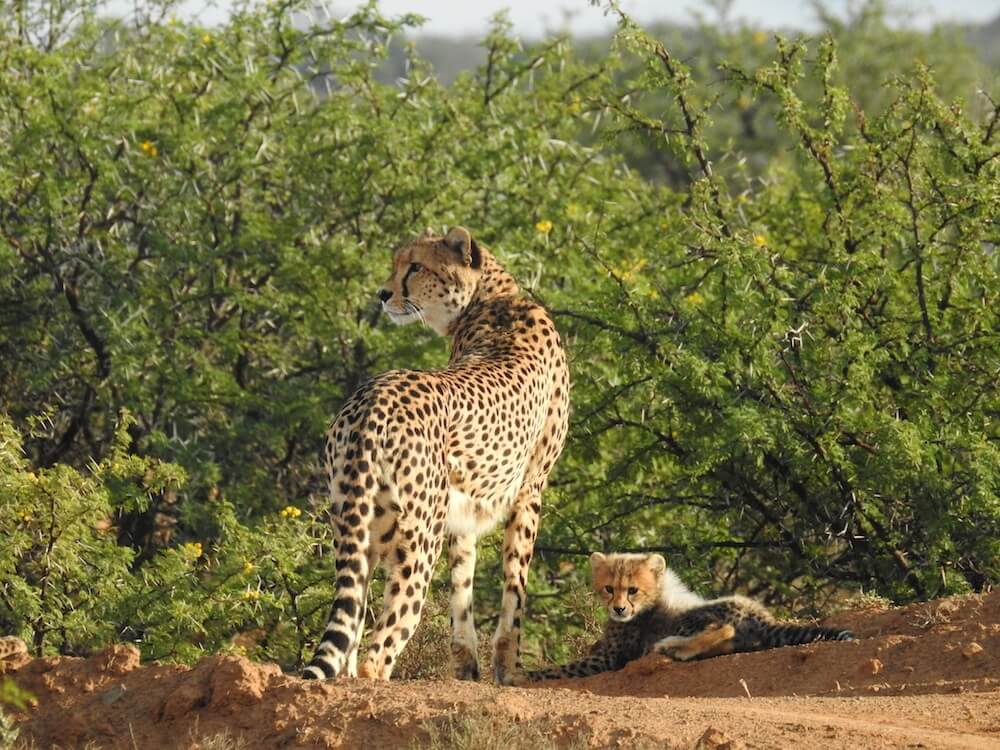 Elephants and lions are once again ranging through the Karoo, with land that used to be overgrazed cattle farms successfully nurtured back into Big Five territory.
Elephants and lions are once again ranging through the Karoo, with land that used to be overgrazed cattle farms successfully nurtured back into Big Five territory.
More than two decades have already passed since Mark and Sarah Tompkins bought 11 decrepit farms and pieced them together to create Samara Private Game Reserve near Graaff-Reinet. Restoring badly degraded land and reintroducing wildlife that once roamed freely is no quick fix, and it took two years before even the natural plant life began to recover.
Then indigenous species like springbok and kudu began to thrive. Other once-prevalent species were gradually brought back in, like eland, hartebeest and springbok, cheetah and black rhino, trailing vultures, leopards and aardvark in their wake.
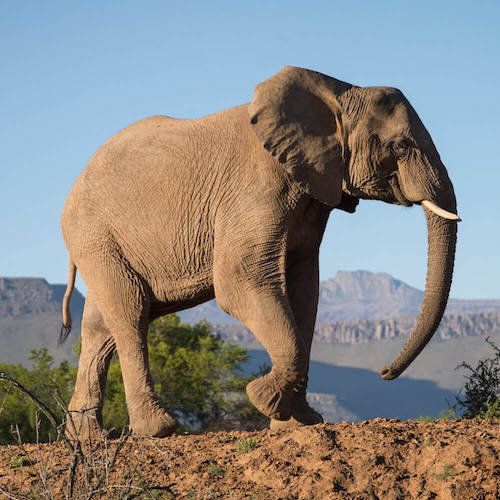 The project has been guided by Prof Graham Kerley, a director of The Centre for African Conservation Ecology at Nelson Mandela University. “Graham advised us on how long to leave the land to rest and recover and when we could reintroduce game. We have very much tried to take a scientific approach to everything we have done,” says Sarah.
The project has been guided by Prof Graham Kerley, a director of The Centre for African Conservation Ecology at Nelson Mandela University. “Graham advised us on how long to leave the land to rest and recover and when we could reintroduce game. We have very much tried to take a scientific approach to everything we have done,” says Sarah.
A couple of years ago a family of six elephants and two bulls were reintroduced and more recently, some lions. Ask about the devastating effect that elephants can have and Graham jumps to their defence. “There is clear evidence that elephant and lion occurred naturally in this region. Elephant were dominant and humans removed them, and the landscape changed because of that. When we put elephant back in they push over the trees and we panic, but they're really just resetting the system to how it was before we removed them,” he says.
“Elephant are resetting the landscape, not trashing it, and that’s important. We don’t know what the ideal number of elephant is but do you want lots of elephant or do you want lots of trees?” His stern face gives way to a smile. “That’s why I like being a scientist - I can ask crazy questions,” he says.
I was l ast at Samara when the elephants had just arrived, but they were proving elusive and hiding in the most remote area of their new environment. Even then, the magnificent vision and effort at Samara had already created an impressive safari experience.
ast at Samara when the elephants had just arrived, but they were proving elusive and hiding in the most remote area of their new environment. Even then, the magnificent vision and effort at Samara had already created an impressive safari experience.
On a game drive one evening ranger Julius Mkhize had the Land Rover tilting at a precarious angle as we drove slowly up a mountain. A glance around showed that none of my fellow passengers looked nervous, so I relaxed and place my trust in him as we rose 1,300m from the Plains of Camdeboo to a plateau on the surrounding mountains.
At the top we crossed scrubland dotted with rare Cape Mountain zebras and wacky wildebeest chasing each other like cartoon characters. Then we walked to the very edge of a plateau, inching onto Eagle’s Rock and thinking those inevitable thoughts about how it would feel to tumble over the edge into oblivion. The views were magnificent even in the haze. Mkhize scanned the broad plains with binoculars and managed to spot a solitary rhino far below.
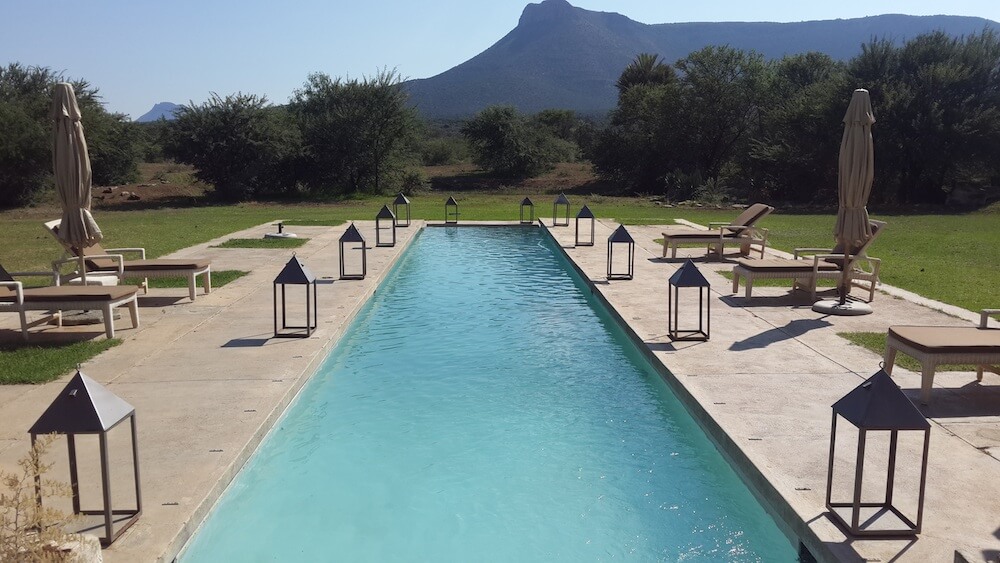 Back at the Manor House, our hostess Candice Afrika was waiting to serve us supper. With a dedicated team of housekeepers and a chef, guests at the Manor House never need to visit Samara’s main lodge, a 15-minute drive away. Instead you live in tasteful isolation with four en-suite bedrooms, endless intriguing ornaments to ponder, various patios and lounges to relax in, a full kitchen, a welcoming bar, and a skinny swimming pool that looks delightful but ices the toes in the Karoo’s stern winters.
Back at the Manor House, our hostess Candice Afrika was waiting to serve us supper. With a dedicated team of housekeepers and a chef, guests at the Manor House never need to visit Samara’s main lodge, a 15-minute drive away. Instead you live in tasteful isolation with four en-suite bedrooms, endless intriguing ornaments to ponder, various patios and lounges to relax in, a full kitchen, a welcoming bar, and a skinny swimming pool that looks delightful but ices the toes in the Karoo’s stern winters.
Samara is a 40-minute drive from Graaff-Reinet and three hours north of Port Elizabeth. It’s the sort of place where you guard your time jealously, happy to chill on a settee watching monkeys skitter around the garden, and reading in between breakfast, lunch, afternoon tea and a four-course supper. One afternoon a masseuse set up a massage table on my own strip of wrap-around patio. Vervet monkeys squabbled with baboons in the trees outside as I was pushed and pummelled into utter relaxation.
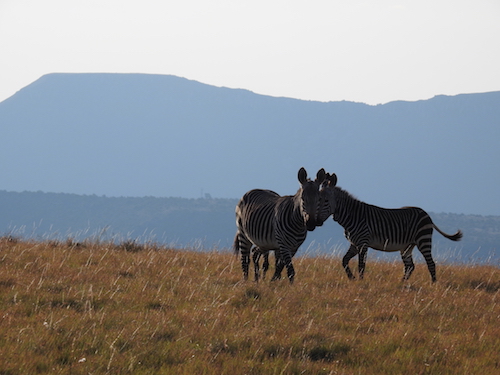 But there were cheetahs to be tracked, so the next morning we saddled up at 7am for a game drive. Samara reintroduced the first cheetah to the area in 125 years when it released three adults a few years into its restoration project. There were two adults when I visited, both fitted with microchipped collars so the rangers could track them to make sure they were safe and for some cheetah research Samara is involved in. The chips are handy for tourists too, because after an hour of walking behind a bleeping antenna, we spotted Chilli, the mother, with her four young cubs.
But there were cheetahs to be tracked, so the next morning we saddled up at 7am for a game drive. Samara reintroduced the first cheetah to the area in 125 years when it released three adults a few years into its restoration project. There were two adults when I visited, both fitted with microchipped collars so the rangers could track them to make sure they were safe and for some cheetah research Samara is involved in. The chips are handy for tourists too, because after an hour of walking behind a bleeping antenna, we spotted Chilli, the mother, with her four young cubs.
They were accustomed to being observed, and we silently watched the cubs cavort and wrestle with each other to hone their hunting skills. They’ll certainly need their wits about them when the lions are introduced, we thought.
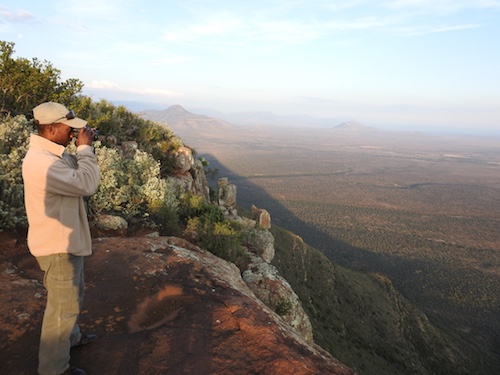 Since then, the restoration mission has continued, leading the way in a world gone crazy. “It is no exaggeration to suggest that we sit at a critical moment in our planet’s history,” Sarah says. “Preservation of the last wild spaces that remain has never been more important. Scientists now estimate that 50% of the world’s land area must be protected by 2030 if we are to have any chance of preventing dangerous climate change, acute biodiversity loss and ecosystem collapse. Given that we currently formally protect only 15% globally, the next decade will be a pivotal one.”
Since then, the restoration mission has continued, leading the way in a world gone crazy. “It is no exaggeration to suggest that we sit at a critical moment in our planet’s history,” Sarah says. “Preservation of the last wild spaces that remain has never been more important. Scientists now estimate that 50% of the world’s land area must be protected by 2030 if we are to have any chance of preventing dangerous climate change, acute biodiversity loss and ecosystem collapse. Given that we currently formally protect only 15% globally, the next decade will be a pivotal one.”
For details of Samara, see here: